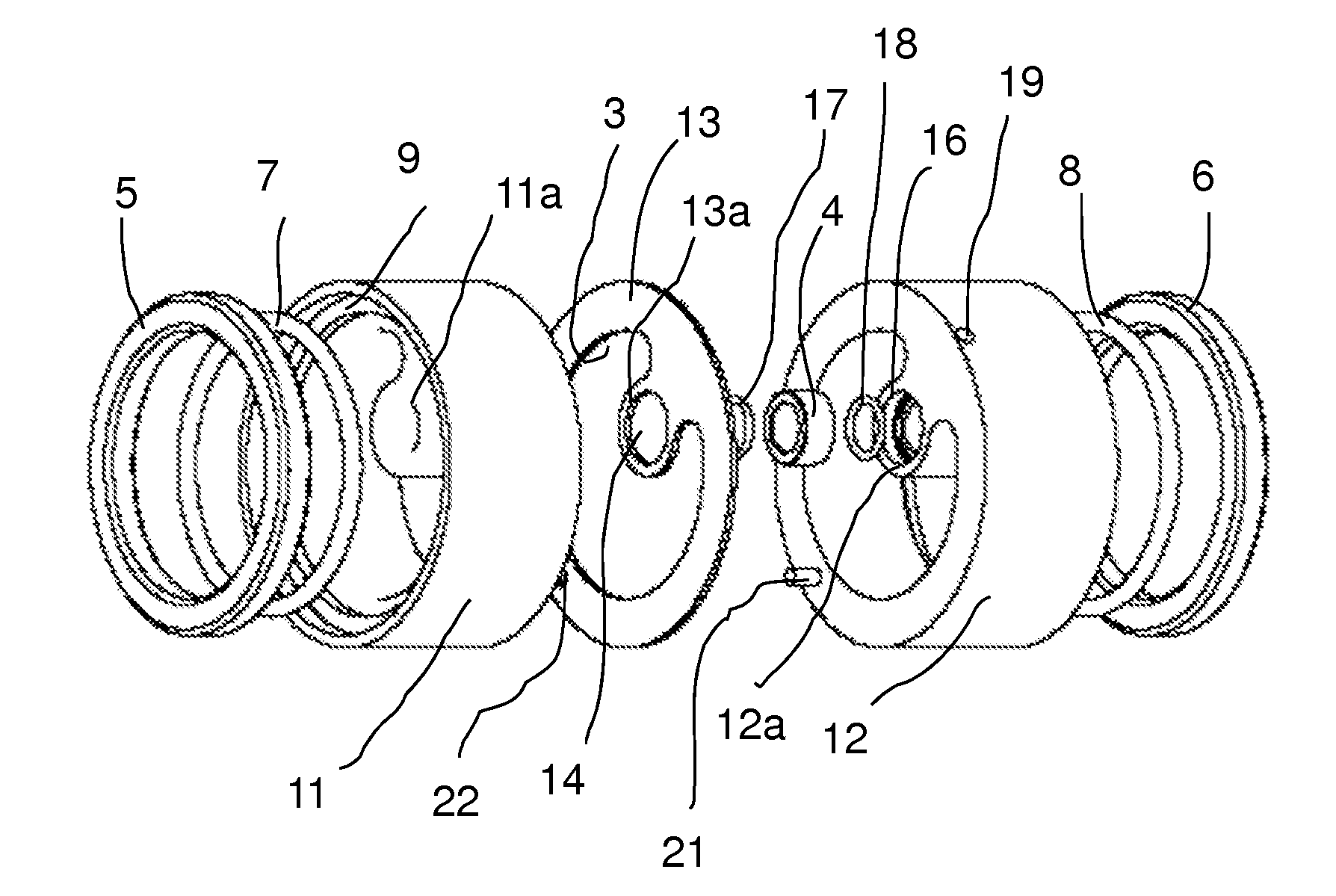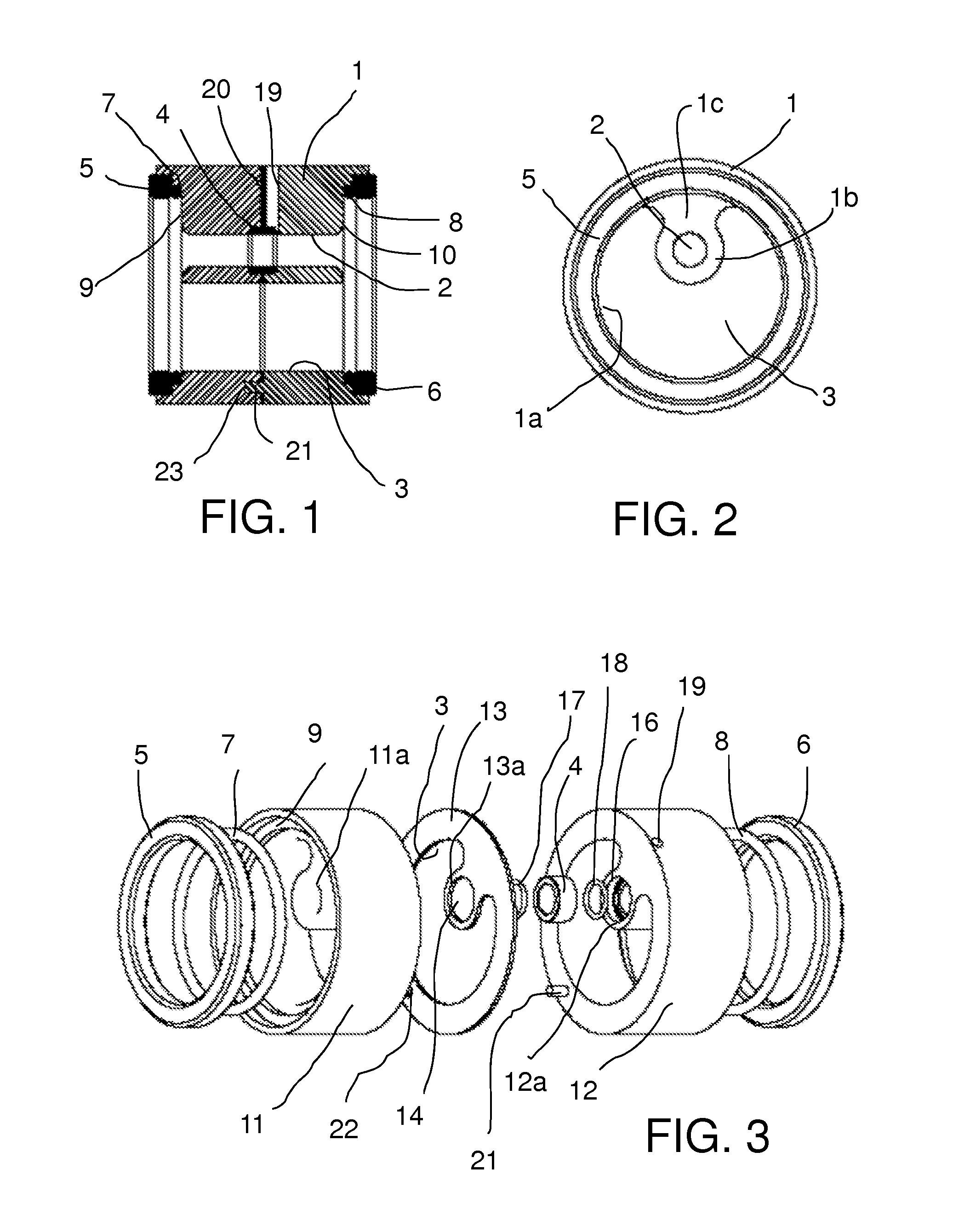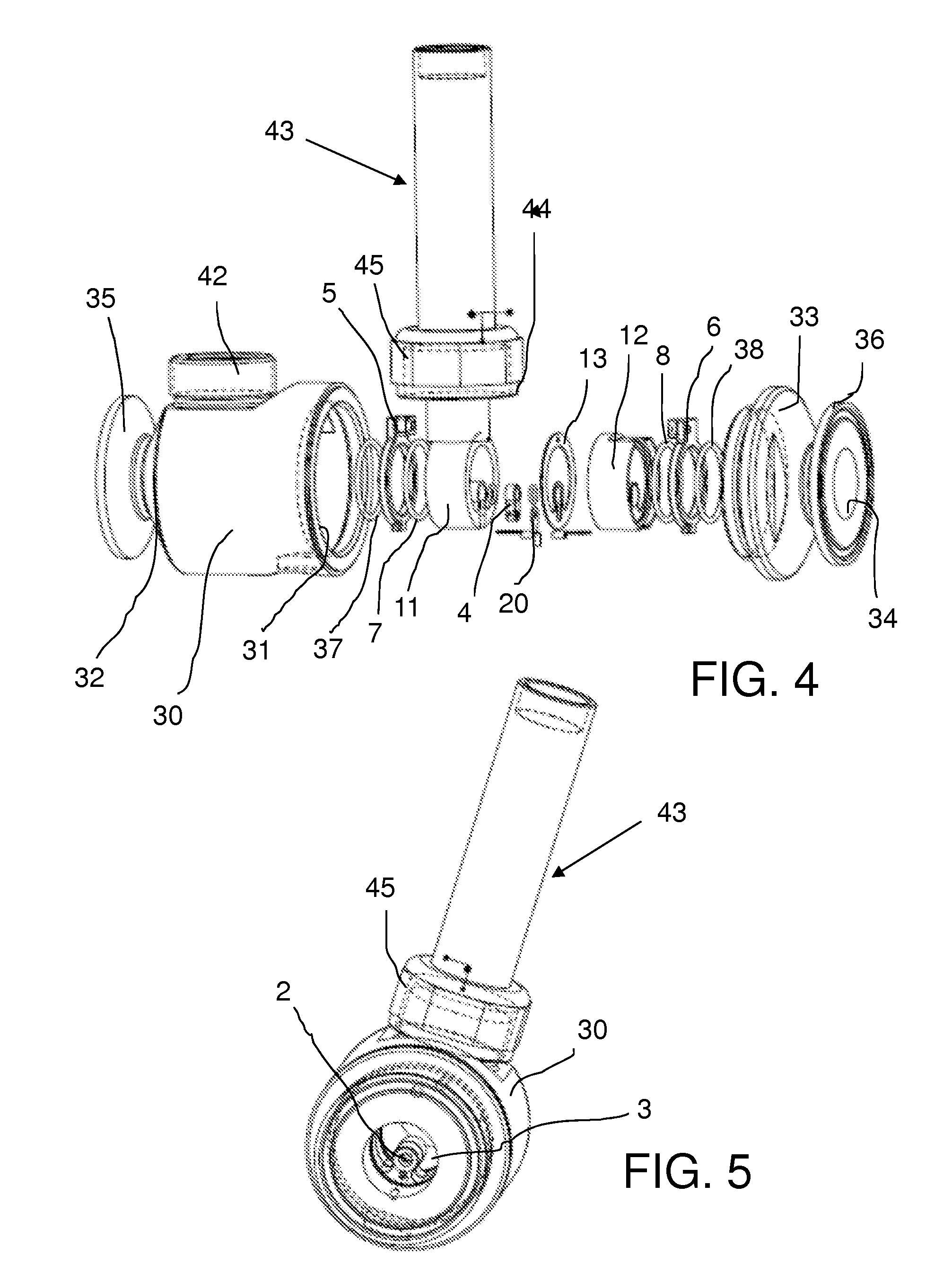Conductivity sensor assembly
- Summary
- Abstract
- Description
- Claims
- Application Information
AI Technical Summary
Benefits of technology
Problems solved by technology
Method used
Image
Examples
Embodiment Construction
[0033]As mentioned above, the present invention is related to a flow-through type conductivity sensor, below frequently referred to as conductivity cell, for measuring the electrical conductivity of a liquid flow. The liquid flow is particularly a process flow, such as a chromatography column process flow or a cross-flow filtration process flow, where piping of relatively large dimensions are used and minimizing hold-up volumes is of importance.
[0034]The conductivity cell of the invention is of the type where conductivity is measured by applying an AC current between spaced electrodes in contact with the liquid. The electrodes are preferably circular, or annular, surrounding the liquid path. In such a cell, the “cell factor” (which is constant for a given cell) is the “distance between electrodes” divided by the “cross sectional area of the current”, i.e. the cross sectional area of the liquid flow.
[0035]Assume that a certain conductivity cell of this type has a length of 10 cm and ...
PUM
 Login to View More
Login to View More Abstract
Description
Claims
Application Information
 Login to View More
Login to View More - R&D
- Intellectual Property
- Life Sciences
- Materials
- Tech Scout
- Unparalleled Data Quality
- Higher Quality Content
- 60% Fewer Hallucinations
Browse by: Latest US Patents, China's latest patents, Technical Efficacy Thesaurus, Application Domain, Technology Topic, Popular Technical Reports.
© 2025 PatSnap. All rights reserved.Legal|Privacy policy|Modern Slavery Act Transparency Statement|Sitemap|About US| Contact US: help@patsnap.com



